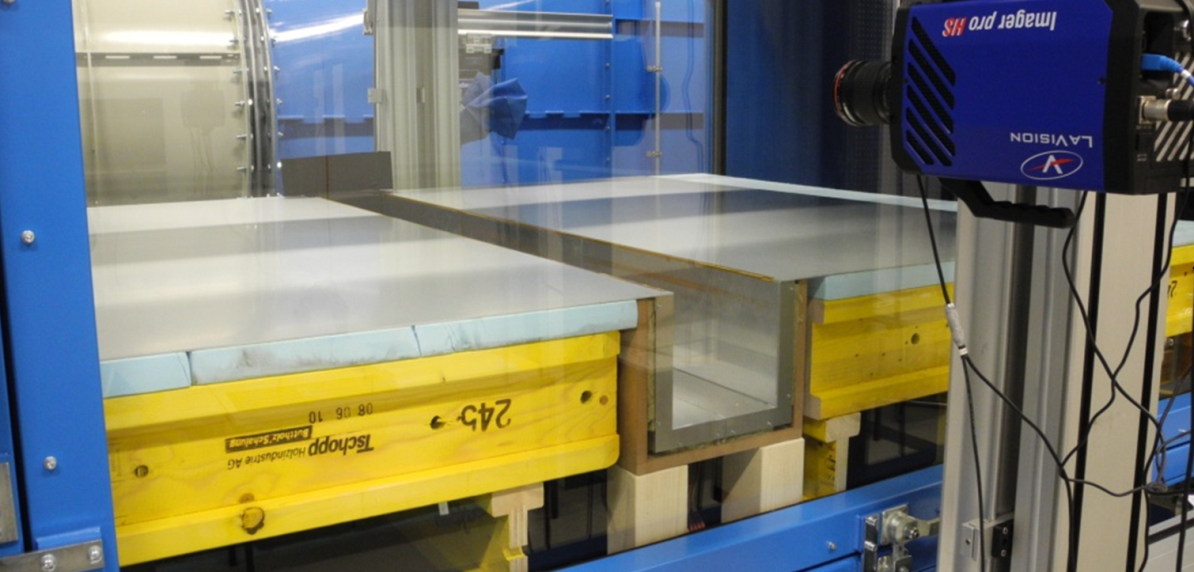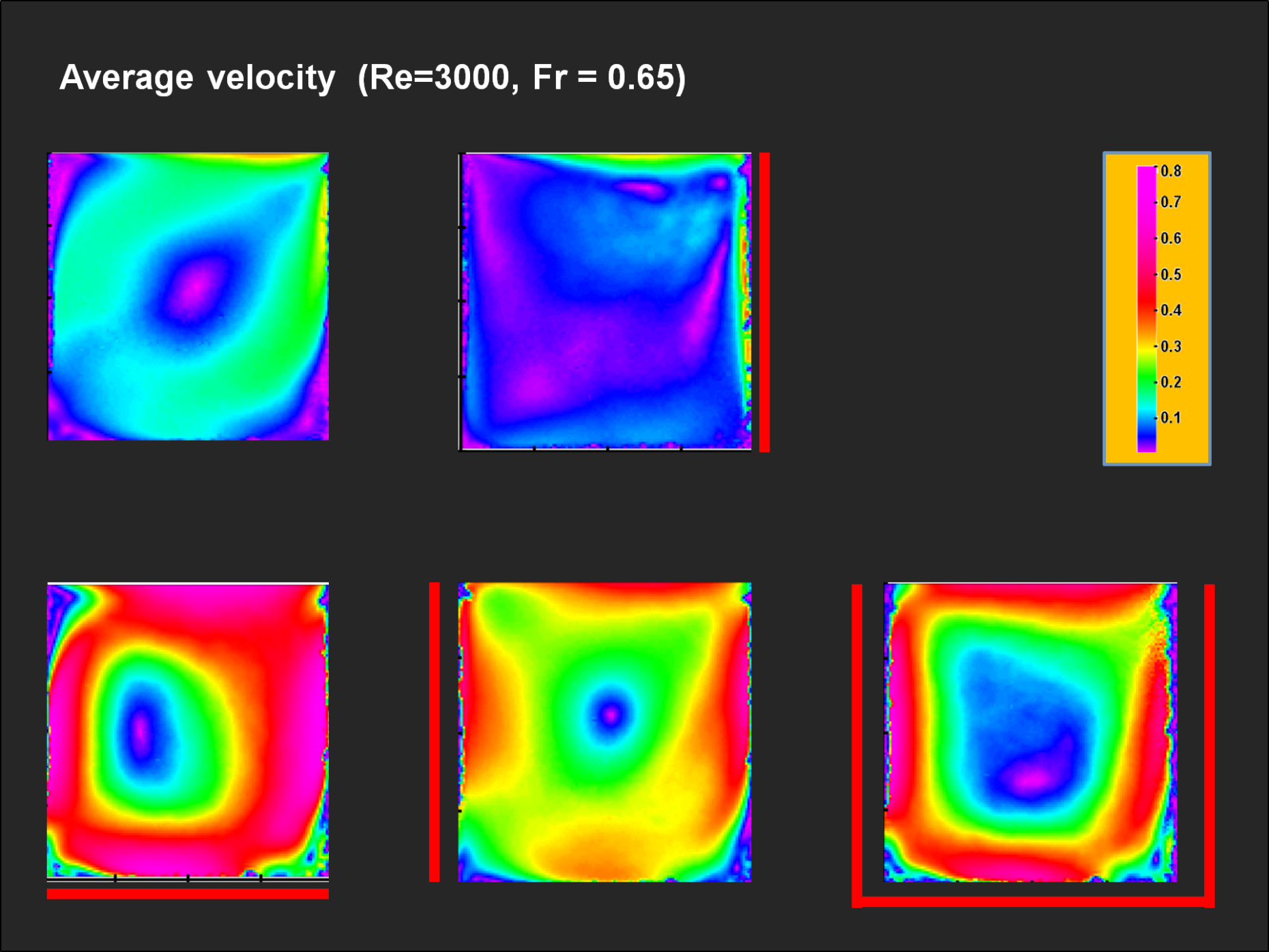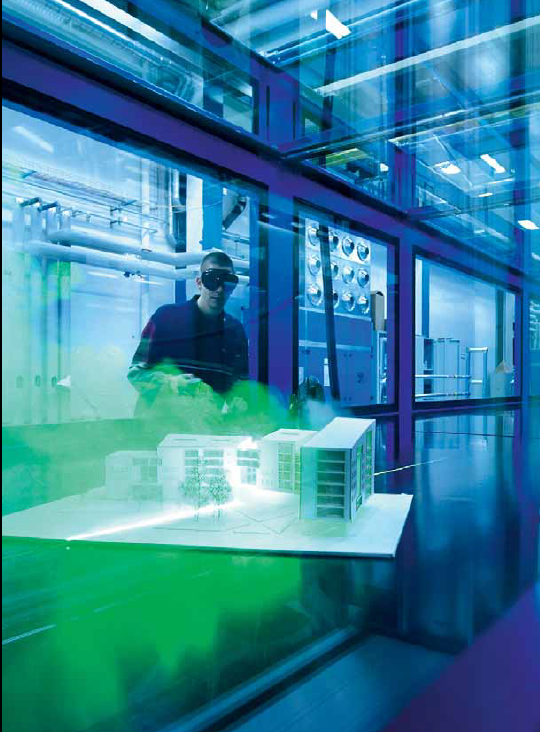Street canyon buoyant flow: J. Allegrini
Our large atmospheric boundary layer (ABL) wind tunnel has been designed and constructed in house, and has a total length of 26 m and a cross section of 1.9 m x 1.3 m. The tunnel is equipped with a time-resolved PIV (particle image velocimetry) system and CTA (Constant Temperature Anemometry) measurement system.

We conducted wind tunnel measurements for forced convective (Paterna et al. 2013, Paterna 2015, Immer 2015, Kubilay et al. 2015b, Allegrini and Lopez 2015) as well as buoyant flows (Allegrini et al. 2013, Vonlanthen 2015, Mirzaei et al. 2014, Mirzaei and Carmeliet 2015, Manickathan 2016) using state-of-the-art time-resolved particle image velocimetry.
In the PhD of J. Allegrini the influence of buoyancy on the flow in a heated street canyon was measured with PIV. Important changes in the flow fields were documented when buoyancy plays an important role and surface temperatures are high and wind speeds low.


